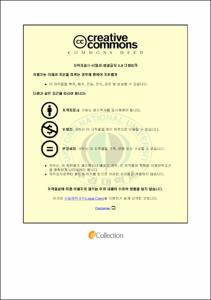아동의 성 및 또래지위에 따른 의사소통능력과 갈등해결전략 분석
- Abstract
- 본 연구에서 아동의 성 및 또래지위에 따른 의사소통능력 및 갈등해결전략의 분석에 따른 결론은 다음과 같다.
첫째, 전반적으로 볼 때 또래관계에서 아동이 얻는 또래지위는 아동의 의사소통능력과 갈등해결전략에서 의미있는 차이를 만든다.
둘째, 전반적으로 볼 때 아동의 성은 아동의 의사소통능력이나 갈등해결전략에 의미있는 차이를 만들지 않는다.
이상과 같은 결론을 토대로 제언을 하면 다음과 같다.
첫째, 아동의 성 및 또래지위에 따라 의사소통능력과 갈등해결전략에 대한 연구들이 미흡한 상황으로, 의사소통능력에 관련된 연구들은 부모-아동간의 의사소통 유형에 관련된 연구가 대부분이다. 향후 아동-아동의 의사소통능력에 대한 보다 많은 연구가 요구된다.
둘째, 또래지위는 학년 및 지역에 따라서 달리 나타날 수 있으므로 사회적·문화적 차이를 고려하여 향후에는 다양한 지역과 학년의 횡단적인 연구가 필요하다고 본다.
셋째, 아동의 성 및 또래지위에 따른 의사소통능력과 갈등해결전략의 관계를 연구하였으나 후속 연구에서는 이러한 변인들 간의 인과적 구조를 검증해 볼 수 있는 연구가 필요하다고 본다.
끝으로, 낮은 또래지위에 있는 아동이 보다 원만한 또래관계를 형성할 수 있도록 아동의 의사소통능력과 또래와의 갈등해결전략의 긍정적 개선을 돕기 위한 교육프로그램 및 평가도구의 개발이 요구된다.
The purpose of this study is to consider the differences of communication competence or conflict-resolving strategies according to elementary school students' gender and peer position. To achieve this research purpose was designated to the following questions based on the relating books and the previous researches. First, is the communication competence affected by children's gender or peer position? Second, are the conflict-resolving strategies affected by children's gender or peer position?
To verify these questions, the subjects of this study were the sixth grade students of Y elementary school in Busan(male:104, female:101) and they performed the sociometric method. Then 114 students(male:56, female:48) were selected as a popular, a rejected, an average assorted by the method of Coie, Dodge and Coppotelli(1982). The students checked the communication competence sheet by Lee Seok-jae(1982) and the conflict-resolving strategies sheet by Bae Sun-young(2003). Two-Way ANOVA verified the results.
The main findings are as follows:
First, regarding the communication competence, girls are more competent than boys and popular children than rejected ones. The former can easily understand discourses and communicate verbally or nonverbally what they are intended considering relationships between persons. Moreover, children's peer position have more effective than their gender. Second, regarding the conflict-resolving strategies girls applied the compromising & integrating strategies while boys applied obliging, dominating, and avoiding strategies. Popular children applied he compromising, integrating and obliging strategies compared with rejected children. Also, children's peer position have more effective than their gender.
The conclusions are as follows:
First of all, generally speaking child's peer position is influential in communication competence or conflict-resolving strategies. Secondly, child's gender is less influential in communication competence or conflict-resolving strategies.
Based upon above results, proposals are as follows:
First, the studies of communication competence and conflict-resolving strategies according to children's gender or peer position are not sufficient so the studies of parental- child communication patterns are common. From now the studies of child-child communication competence are necessary. Second, the studies of a peer position will be performed across according to grades or regions. Third, following studies are necessary in order to verify the causeal structures of variants. Finally, it is necessary to develop educational programs and evaluation method in order to form the health peer relationships for relatively low peer positioned children.
- Issued Date
- 2009
- Awarded Date
- 2009. 2
- Type
- Dissertation
- Keyword
- 의사소통능력 및 갈등해결전략
- Publisher
- 부경대학교 교육대학원
- Alternative Author(s)
- Shin, Sun-Young
- Affiliation
- 부경대학교 교육대학원
- Department
- 교육대학원 교육심리전공
- Advisor
- 이경화
- Table Of Contents
- Ⅰ. 서론 = 1
1. 연구의 필요성 및 목적 = 1
2. 연구문제 = 4
3. 용어의 정의 = 4
가. 또래지위 = 4
나. 의사소통능력 = 5
다. 갈등해결전략 = 5
Ⅱ. 이론적 배경 = 6
1. 또래지위 = 6
가. 또래지위의 개념 = 6
나. 또래지위 측정과 분류 = 8
다. 또래지위별 아동의 특성 = 11
2. 의사소통능력 = 13
가. 의사소통능력의 개념 = 13
나. 의사소통능력의 구성요소 = 18
다. 또래지위와 의사소통능력 = 20
3. 갈등해결전략 = 23
가. 갈등해결전략의 개념 = 23
나. 갈등해결전략의 유형 = 25
다. 또래지위와 갈등해결전략 = 29
Ⅲ. 연구방법 = 33
1. 연구대상 = 33
2. 연구도구 = 34
가. 사회성 측정검사 = 34
나. 의사소통능력 검사 = 35
다. 갈등해결전략 검사 = 36
3. 연구절차 = 38
4. 자료처리 = 38
Ⅲ. 연구결과 = 40
1. 아동의 성 및 또래지위에 따른 의사소통능력의 차이 = 40
2. 아동의 성 및 또래지위에 따른 갈등해결전략의 차이 = 46
Ⅴ. 논의 및 결론 = 51
1. 논의 = 51
2. 결론 = 53
참고문헌 = 54
부록 = 61
- Degree
- Master
- Files in This Item:
-
-
Download
 아동의 성 및 또래지위에 따른 의사소통능력과 갈등해결전략 분석.pdf
기타 데이터 / 1.57 MB / Adobe PDF
아동의 성 및 또래지위에 따른 의사소통능력과 갈등해결전략 분석.pdf
기타 데이터 / 1.57 MB / Adobe PDF
-
Items in Repository are protected by copyright, with all rights reserved, unless otherwise indicated.